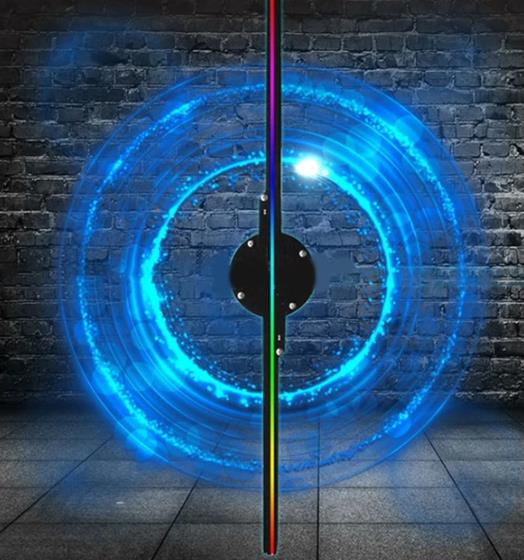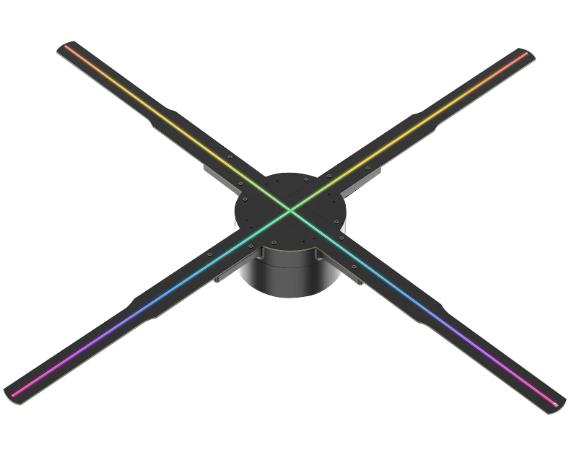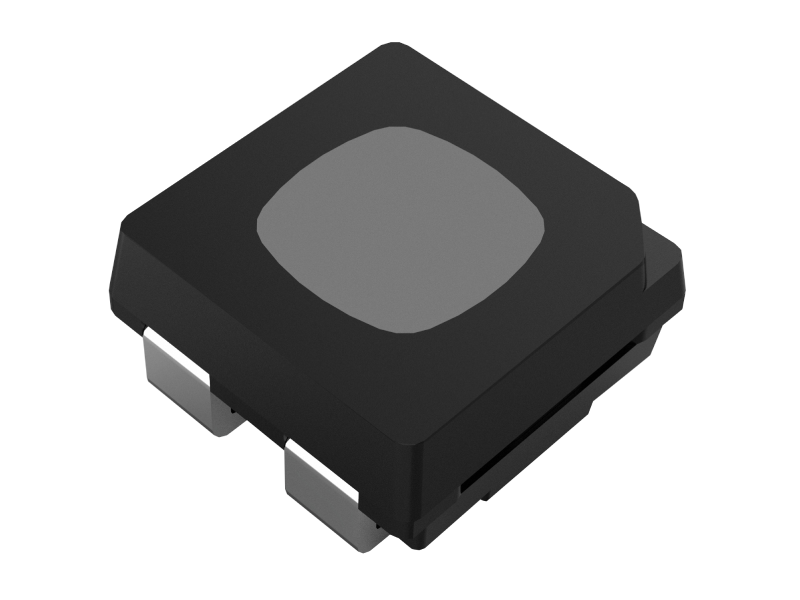3D LED hologram fan, also known as persistence of vision (POV) displays, is a cutting-edge technology that has been developed over many years to create an immersive 3D visual experience for viewers. 3D holographic LED fan screens, also often referred to as holographic fans or 3D LED fans, are an eye-catching and cost-effective way to present visual content.

3D holographic LED fans are a fashionable and versatile solution that can be used in different ambient lighting circumstances. They have wide market recognition, are well received by corporate users, merchants and event organizers, and are widely used in various application scenarios.
3D holographic LED fans are based on the persistence of vision (POV) display technology, which creates a constantly changing visual illusion by quickly displaying a series of static images. Since our eyes cannot keep up with the speed of changing images, dynamic 3D visuals are formed.
Our knowledge of persistence of vision can be traced back to the 18th century. However, it was not until the late 20th century, with the continuous development of LED technology, that the application of persistence of vision technology gradually became popular.
Today, POV (persistence of vision) technology is widely used in holographic displays, LED displays, and even wearable devices such as smart watches.
Persistence of vision technology is popular for creating dynamic and immersive visual experiences, mainly used for advertising, events and other forms of digital media.
The development history of 3D holographic imaging technology can be traced back to the 1950s and 1960s, when 3D movies came out and Hungarian-British scientist Denis Gabor invented holograms. Subsequently, in the 1970s and 1980s, holograms gradually became popular in science fiction novels and became key plot points in many science fiction movies such as “Star Wars” and “Star Trek”.
As technology has advanced, the feasibility of creating 3D holographic images has gradually increased. In the 1990s, holographic displays began to become a reality, and companies developed prototypes and demonstrations of holographic technology. However, these early attempts at holographic displays had limited functionality and were expensive to produce.
As early as the 19th century, a technique called Pepper’s Ghost was used to create illusions on stage. The technique uses a piece of glass or other transparent material to reflect an image onto the stage, creating a ghostly image. This technique is mainly used in stage performances and exhibitions, such as the return of late musicians such as Tupac Shakur and Michael Jackson to the stage in the form of holographic 3D images.

3D holographic LED fans generally adopt a cross-shaped fan blade design, which mainly includes fan blades, full-color LED beads, power switches, TF memory cards, installation structures and brackets, etc.

Kinglight provides various RGB LEDs
The working principle of the 3D holographic LED fan display is to drive the RGB full-color LED beads on the blades through the rapid rotation of the fan blades. The LED beads constantly refresh the displayed image content and create a high-definition full-color 3D dynamic image content floating in the air based on the principle of visual persistence.
3D holographic LED fans are generally used to display logos, product models or other carefully designed dynamic 3D visual content.
3D holographic LED fans can be viewed from different angles without affecting the visual effect. 3D holographic LED fans can be used in any ambient brightness, making it a very practical 3D dynamic visual solution.
3D holographic LED fans are an advertising method that easily attracts passers-by to stop and watch, and can bring an unforgettable visual experience. 3D holographic LED fans are cost-effective, versatile, and have high-definition display capabilities, making them an excellent choice for enhancing brand and product influence.
Cost effective
3D holographic LED fans are inexpensive and do not require a high budget, and the cost of renting or purchasing them is not high.
Eye catching
The 3D holographic visual contents are proved to be eye catching. Using a 3D holographic LED fan is sure to grab attention and impress your audience.
Wide usage
3D holographic LED fans can be used in a variety of occasions, including retail spaces, exhibitions, and events. They can be mounted or assembled in a variety of ways to suit your needs.
High definition display
3D LED hologram fans can also display high definition visual content just like a traditional LED display to provide HD 3D visuals.
Easy to use
The 3D holographic LED fan is not only easy to install, but also simple to set up, and can quickly play highly visually attractive video content.
Customizable
3D holographic LED fans can usually be customized according to the characteristics of the actual video content, thereby better balancing the image quality and cost investment and improving the cost-effectiveness of the product.
In summary, 3D holographic LED fans are a cutting-edge LED display technology with a simple design and low cost. They can display dynamic full-color 3D holographic content with great visual appeal. They can strike a good balance between investment and actual returns, and are an ideal choice for enhancing product and brand influence, attracting possible buyer of your products or consumer of your services, and increasing the operating income of physical stores.